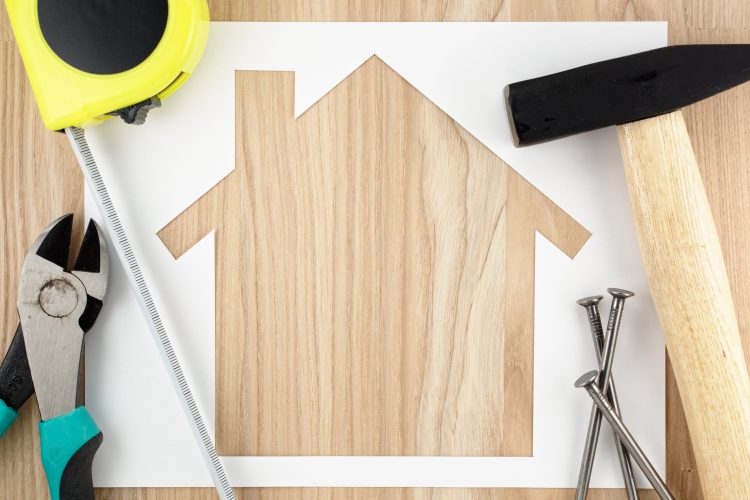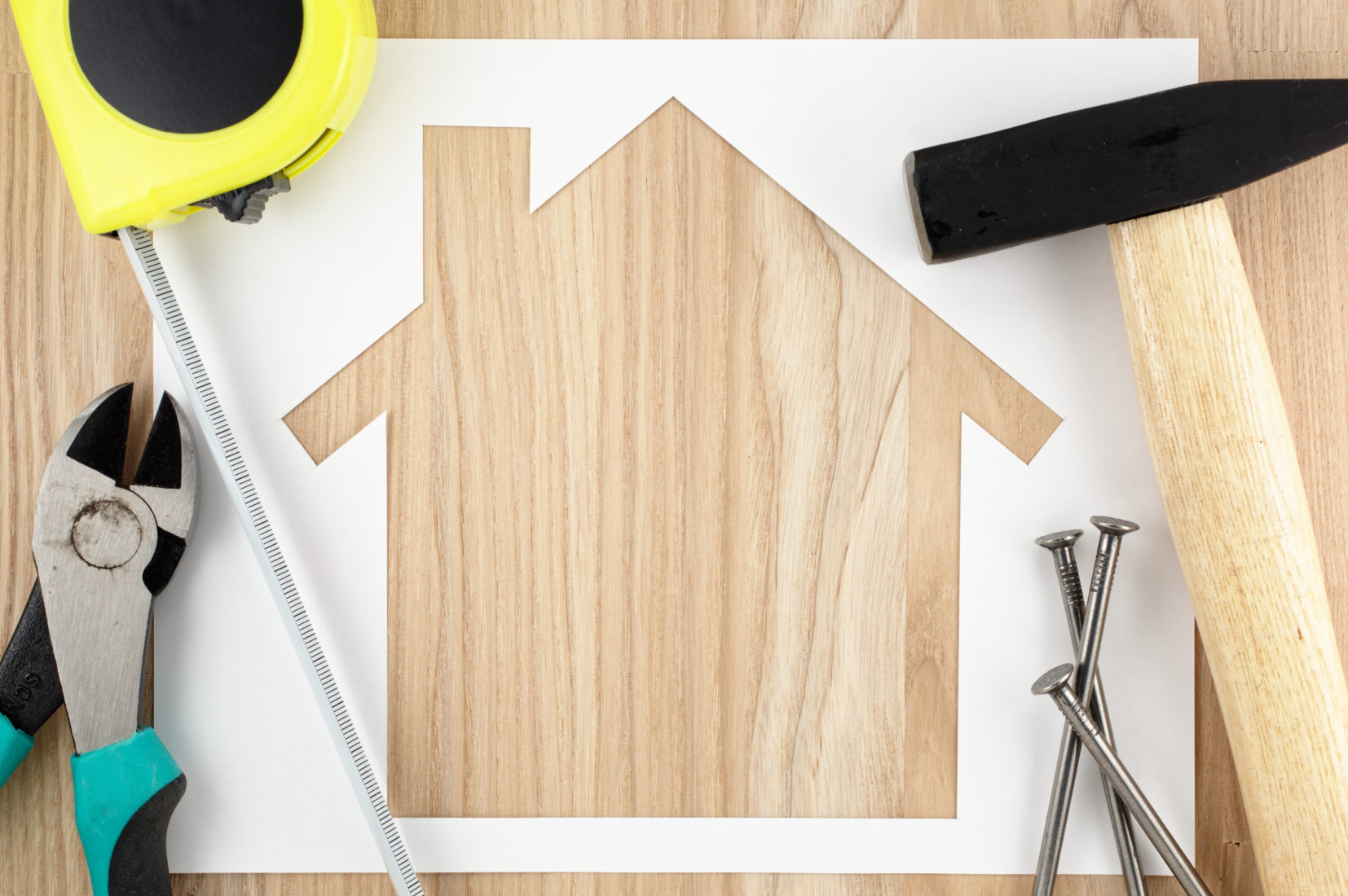
Homeowner’s Guide to Upkeep and Improvements

Whether you are a homeowner, looking to buy a home, or an investment property owner doing your own (DIY) maintenance and repairs — this guide is for you. Repairs to a house can be costly if regular inspections and maintenance are not performed. Not only will this guide assist you with knowing what to look for when doing your own repairs on a house, it will also help you identify any issues that may need the help of a professional.
We tried to cover many of the common items that need regular maintenance checks in your home — many you can do yourself. You can save a LOT of money avoiding costly repairs through regular seasonal maintenance and home efficiency checks. At the end of our article will be a downloadable seasonal maintenance guide with a checklist that covers most of the common areas of concern after we post the outdoor checklist next week. However, every house has its own story and, if there’s an issue on your house that is not touched on, let us know and we’ll look at adding it.
Before you get started, here are some tools and supplies you may need:
- Batteries – 9v
- Ladder
- Light Bulbs (size depends on fixtures)
- Vacuum
- Cleaning Supplies
- Bucket
- Screw Driver Set
- Hammer
- Filters (size depends on HVAC unit)
- Work Gloves
- Safety Glasses
- Caulk gun
- Caulk (color and type depend on what is being repaired)
- Scraper
- Putty Knife
- Broom & Dustpan
- Garden hose
SPRING HOME MAINTENANCE
Spring is that time of year when plants grow and flowers bloom, 80–degree weather is upon us and everything outside starts to come to life after a winter nap. Mother nature takes care of the new growth by sending rain and wind and, unfortunately, severe weather often comes right along with it. Stay a step ahead of the weather by protecting your home, inside and out, with regular seasonal maintenance.
INDOOR
Smoke and Carbon Monoxide Detectors
Having smoke detectors is one of the least expensive things you can do to protect your home and family. More importantly, correct installation and maintenance is key to the detector functioning properly during an emergency. While some smoke alarms do not have replaceable batteries, many do. It is important to replace the batteries twice a year and test the alarm monthly. For the latest information on Fire Safety & Prevention, visit the National Fire Protection Association website.
Furnace & Portable Space Heaters
A major factor in home comfort is the ability to properly heat and maintain the temperature in your home. We are experts on home efficiency and we know from experience that heating your home efficiently requires proper insulation but it only helps if the units used to heat your home are functioning properly. For comparison — for all the visual learners out there — it is the same as putting your coffee in an insulated mug versus a regular coffee cup. Which will stay warmer longer?

Whole house heating systems require the filter to be changed frequently. Each unit does vary depending on the frequency of use and type of filter used. Heating systems should be inspected and tuned-up by an HVAC professional once a year. Portable Space Heaters also need connections checked (electrical and gas), and filters cleaned or replaced. Follow manufacturers directions for storing the appliance for the spring.
Air Conditioners
Much like the heating system, air conditioners only work well if your home is properly insulated and air-sealed. The only thing standing between you and the outside is your home. Gaps in the doors and windows, improperly vented attics, and insufficient or inadequate insulation are all factors in maintaining a comfortable temperature and saving money on utility bills. See the Outdoor Spring Checklist for more information on your A/C unit.
Sump Pump
In Kansas, having a basement has become standard building practice for most newer homes due to the prevalence of tornadoes. A sump pump is one of the MOST important items in your household during the rainy season (besides proper drainage from gutters to keep the water away from your foundation). Sump pumps take the excess water out and away from your house and without it, the basement would flood.
Testing the sump pump should be done at least annually. Remove debris, check to see if it turns on when it fills up to the float and then check to be sure the discharge pipe is clear are some of the basics. Many people, especially those with a finished basement, opt for a second sump pump or adding a battery backup to their only one in case of a power outage. Here is a helpful link to Lowe’s website regarding how a sump pump works and the different types.
Humidifiers & Dehumidifiers
Dry sinuses, bloody noses, and cracked lips are all signs of dry indoor air. Humidity levels in the home should be kept between 30–50%. Generally, humidity levels are lower in the winter and higher in the summer. In Kansas, humidity levels can often exceed 80% outdoors. It is recommended to have a humidistat (hygrometer) to measure the indoor levels for optimum comfort. Always follow all manufacturer instructions when storing a portable unit for the season. There are filters, hoses, reservoirs and electrical components to inspect. If your home has a whole house humidifier, an HVAC professional can service it when they come to do the annual inspection for your other heating and cooling units.
Dryer
Are your clothes taking more than one cycle to dry? There might be an issue with the dryer exhaust vent pipe or vent pipe connection hose. Regular inspection behind the dryer to check and see if the hose is still connected to the vent pipe and cleaning out lint buildup is key to maintaining a dryer and preventing fires. Use your vacuum to clean out behind, underneath, and inside the connection hose leading up to the vent pipe. This article from the American Society of Home Inspectors is a great resource for an in-depth look at dryer maintenance.
Refrigerator
From cleaning the condenser coils in the back to simply wiping down the door seals, refrigerator maintenance is a MUST. Unless you live alone, chances are someone is spilling liquids or food and not cleaning it up, shoving food to the back accidentally blocking air flow, and adjusting the temperature while you are not looking — because it’s a button after all, and fun to play with — or maybe it was the cat?

All of those will contribute to your refrigerator working harder and you losing money on costly repair or replacement when it goes out. Check out “How to Avoid Refrigerator Repairs” by The Family Handyman on the how-tos.
Hot Water Heater
Maintaining a water heater is something many homeowners can do. There will be gas or electricity involved depending on your type of heater so it is best to only maintenance it if you feel 100% comfortable working on it. You can always call a licensed plumber to perform the required maintenance for a fee.
Be sure to wear safety goggles and gloves before starting the checklist on this portion. Gas or electricity MUST be turned off before starting this inspection and maintenance. From checking the pressure relief valve to draining the hot water heater, Lowe’s has a great step-by-step guide for you to follow called “Maintain a Water Heater.” Regular maintenance will reduce the buildup and sediment and help you catch many issues before they become an emergency or expensive replacement.
Ceiling Fans
Warmer weather is on the way with springs’ arrival! Ceiling fans help circulate the air in your home, helping to create a comfortable living area for you and your family. Just a reminder — turn off your fan before attempting to clean or repair. Believe it or not, a dirty fan can not only put dust and allergens into the air you breathe, but dirty blades can cause a fan to shake and make noise. After dusting your fan and blades the next thing you will check is the screws holding on the fan, tighten any loose ones. Next, check the pull chains for any damage and replace the chains as needed — your local hardware store sells these if yours broke or if you just want to add a fancy pull to the end of your chain so you can tell which one is the light and which one is the fan.
If your fan also has a light receptacle, replace any bulbs that are blown out. Be sure to replace with only the type and wattage recommended for your unit (it should be labeled). Some fans also have a place to oil the motor. See this great wikihow guide on how to “Oil a Ceiling Fan.” Last, you will want to check the direction your fan blades spin. There will be a switch to change it from counterclockwise (for spring and summer, to bring the cool air up from the floor and circulate around the room) versus clockwise (for fall and winter, to redistribute the warm air at the ceiling level down and round the room).
Chimney
This one will be quick since regular maintenance should be performed by a professional chimney sweep to prevent fires. According to the National Fire Protection Association, “the leading factor contributing to home heating fires (28%) was failure to clean, principally from solid-fueled heating equipment, primarily chimneys.” From creosote buildup to improperly vented systems there is a lot that can go wrong. For the average homeowner in the spring, you will want to check for any dirt and debris and close the damper when not in use.
Attic
This is probably one of my favorite areas to talk about since we create home comfort by making sure your home is energy efficient. We don’t just sell you some insulation if your home is “drafty,” we actually assess the whole picture to be sure that any insulation installed will perform at its highest. It’s part of the complete picture of home energy efficiency.
Some great indicators you may need more insulation and better ventilation besides visually checking your attic for bare spots of insulation are:
- If your air conditioning or heating system runs often (or doesn’t shut off)
- Different temperatures in different rooms throughout the home (having that “one cold or hot room” is not normal)
- Wet spots on your ceiling indicating moisture is building up and better ventilation is needed (before you have to re-do your ceiling $$$)
That’s it for the INDOOR section – I will post the OUTDOOR Spring checklist in the next few weeks, then follow it up with an easy to read, downloadable checklist to make it simple to check off your accomplishments as you go. This is all part of the Homeowner’s handbook coming out with the new website.
Home Maintenance Checklist
SPRING INDOOR
|
||
| INSPECT | MAINTAIN | REPLACE |
| Use test button on detectors throughout house to check operation. | Change batteries two times per year (every 6 months). If unit is “chirping” the battery is already low. | Units need replaced every 7–10 years or if after replacing the battery the unit does not work. |
|
||
| INSPECT | MAINTAIN | REPLACE |
| Check pull cords, lights and light sockets and test all functionality for operation. | Change the direction of your fan to counter-clockwise so the air will blow down. Dust the blades regularly. | If the unit is making a lot of noise or certain functions no longer work, then it is time to upgrade. |
|
||
| INSPECT | MAINTAIN | REPLACE |
| Check refrigerator door to make sure it is airtight. Make sure food is clear of internal fan. Check water hoses and cords for damage. | Clean all dust and debris from under and behind the unit and vacuum coils. Change water filter every 6 months (or sooner if fridge sensor indicates it is time). | Most refrigerators last 10–20 years. New units can save you money on your energy costs. |
|
||
| INSPECT | MAINTAIN | REPLACE |
| Heating systems should be inspected and tuned-up by an HVAC professional once a year (typically done in the fall before use for cold weather). | Change filters frequently (approx. every 2–3 months). Vacuum baseboard heaters and air vents. | Your furnace and baseboard heater is not designed to last forever. A well maintained unit can last 15–20 years. New technology can save you big $ on your energy costs. |
|
||
| INSPECT | MAINTAIN | REPLACE |
| Check cords, supply lines, moving parts, and operation per manufacturer instructions before storing. | Address any service concerns, empty fuel (gas/pellet units) then clean and store in a safe place. | Portable units vary in longevity based on how much use and how the unit was stored. Replace the unit if there is any questions about safe operation next season. |
|
||
| INSPECT | MAINTAIN | REPLACE |
| Central air conditioning systems should be inspected and tuned-up by an HVAC professional once a year (typically done in the spring before use for warm weather). Window A/C units should be checked for secure install & safe operation. | Clear the outside of the A/C unit from leaves, debris or winterizing materials. Change or clean (depending on type used) any filters used on A/C units. | The A/C unit is housed outside and subject to extreme heat and weather. A well maintained unit can last approx. 10–15 years. Newer units are more efficient and can save you big $ on your energy costs. |
|
||
| INSPECT | MAINTAIN | REPLACE |
| Call an HVAC professional out for help maintaining a whole house humidifier. Smaller, portable units need checked for safe operation such as looking at the power cord and correct operation. | Change or clean (depending on type used) any filters used on humidifiers/dehumidifiers. | If the unit is no longer working properly or if there is any damage to a portable units’ cord or functionality, then it is time to get a new one. Portable units are readily available at most hardware and big box stores. |
|
||
| INSPECT | MAINTAIN | REPLACE |
| Check vent hose for lint buildup and a secure connection to both the unit and the wall. | Vacuum out any lint in hose and under dryer to prevent fires. | Holes in the dryer hose will allow the lint to disburse into the air during operation. Buy a new hose if there are holes. |
|
||
| INSPECT | MAINTAIN | REPLACE |
| Test the temperature and pressure safety relief valve according to manufacturer instructions. This should be done yearly. | Drain your hot water heater per manufacturer’s guide once a year to remove sediment from bottom. | Replace anode rod before it stops working — about every 5 years. |
|
||
| INSPECT | MAINTAIN | REPLACE |
| Test the pump according to the manufacturer’s’ instructions. | Clean out the pump and surrounding space annually. | Basements are common in Kansas and they typically run on electricity. During storms, electricity can go out. Consider investing in a backup sump pump or generator so you don’t get surprised with a flooded basement. |
|
||
| INSPECT | MAINTAIN | REPLACE |
| Check fireplace and chimney for any dirt and debris. | Clean out fireplace of any ashes (should be done about every 40–50 fires). Close the damper when not in use. | If you see a blockage or anything is not working 100%, call a professional to clean and inspect right away. |
|
||
| INSPECT | MAINTAIN | REPLACE |
| Check attic and stairs for heat loss. Inspect pull down type attic stairs for any loose, missing or broken parts. | Add insulation where needed. Contact us for a home energy audit or if an extensive amount of insulation is missing and you can see the tops of the joists. | Replace worn out insulating materials. If insulation is missing in areas you could be paying 10–20% more EACH MONTH on your energy bill! |





